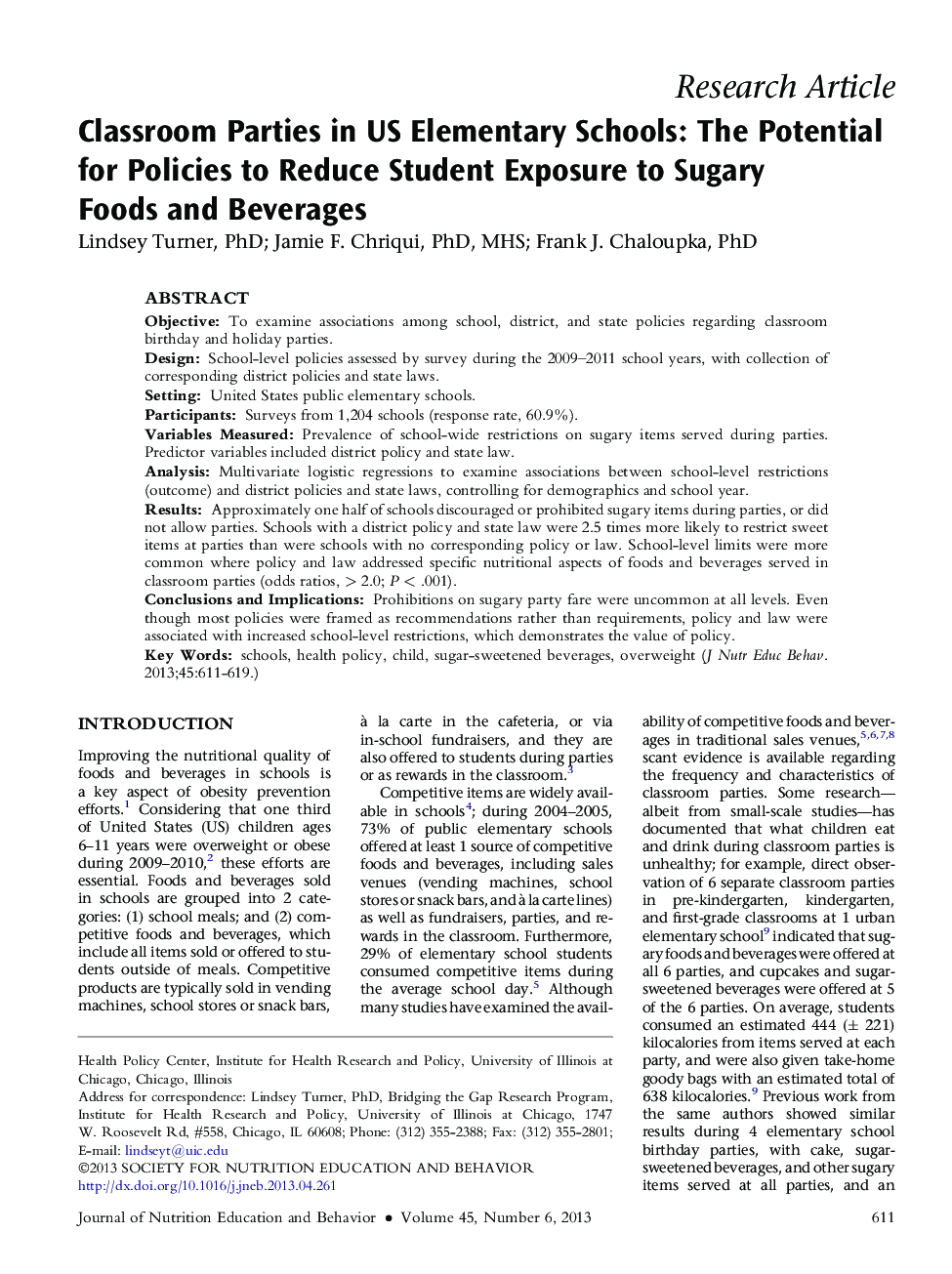| Article ID | Journal | Published Year | Pages | File Type |
|---|---|---|---|---|
| 362006 | Journal of Nutrition Education and Behavior | 2013 | 9 Pages |
ObjectiveTo examine associations among school, district, and state policies regarding classroom birthday and holiday parties.DesignSchool-level policies assessed by survey during the 2009–2011 school years, with collection of corresponding district policies and state laws.SettingUnited States public elementary schools.ParticipantsSurveys from 1,204 schools (response rate, 60.9%).Variables MeasuredPrevalence of school-wide restrictions on sugary items served during parties. Predictor variables included district policy and state law.AnalysisMultivariate logistic regressions to examine associations between school-level restrictions (outcome) and district policies and state laws, controlling for demographics and school year.ResultsApproximately one half of schools discouraged or prohibited sugary items during parties, or did not allow parties. Schools with a district policy and state law were 2.5 times more likely to restrict sweet items at parties than were schools with no corresponding policy or law. School-level limits were more common where policy and law addressed specific nutritional aspects of foods and beverages served in classroom parties (odds ratios, > 2.0; P < .001).Conclusions and ImplicationsProhibitions on sugary party fare were uncommon at all levels. Even though most policies were framed as recommendations rather than requirements, policy and law were associated with increased school-level restrictions, which demonstrates the value of policy.
